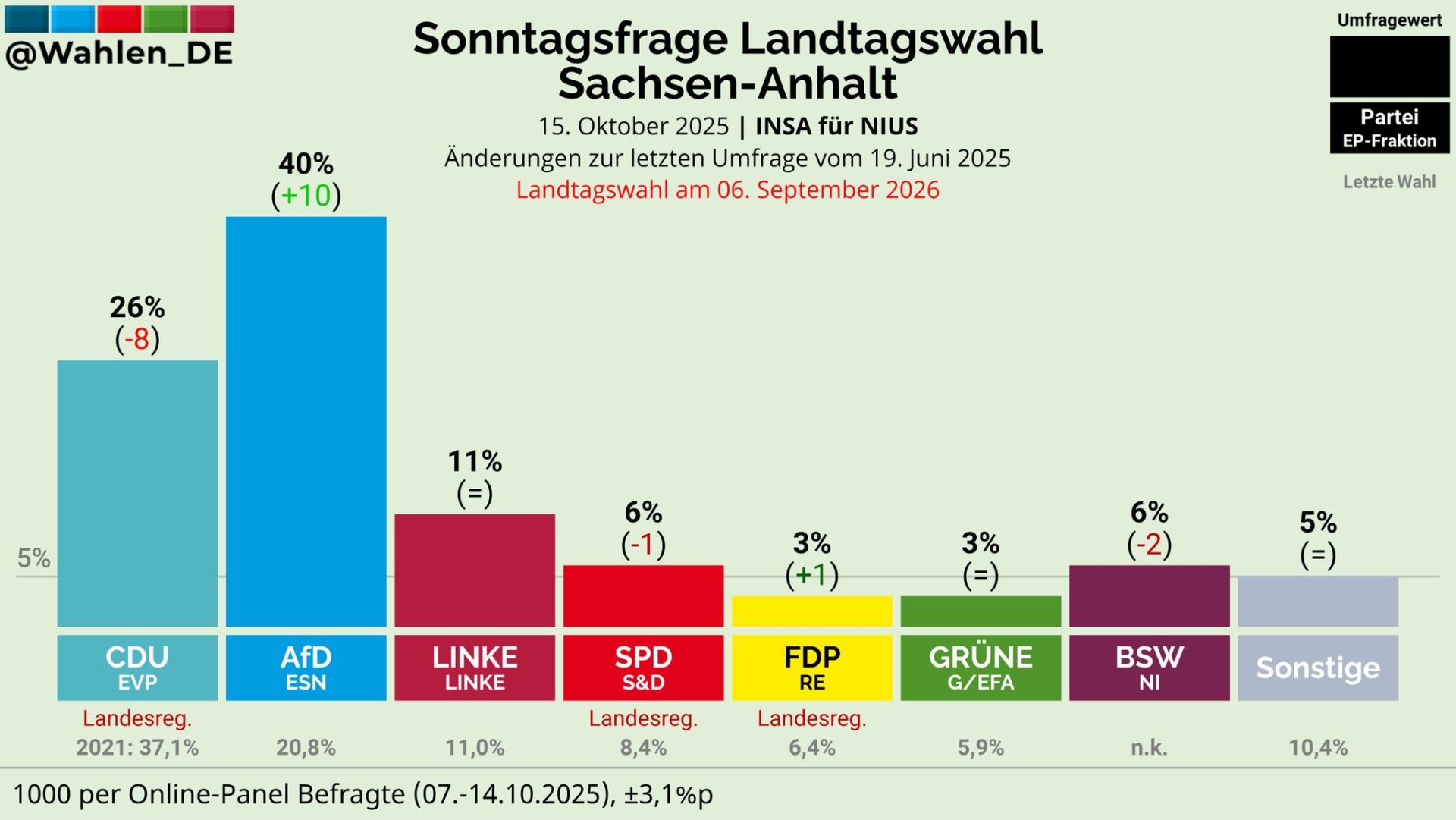For the first time, support for the Right-wing populist AfD has hit the 40% mark in a German region. An INSA poll in the eastern state of Saxony-Anhalt puts the AfD far ahead of the second-placed Christian Democrats, while only one of the other parties even makes it into double figures.

Could this be a rogue poll? Unlikely, because it’s consistent with a poll last month, from a different company, showing the AfD on 39%. It also corresponds with nationwide polling trends, in which the party now regularly comes first.
This matters because it threatens the sacrosanct Brandmauer (“firewall”) — a pact among the other parties to keep the AfD out of power. In other European countries, including Italy, the Netherlands, the Czech Republic and Finland, populist Right-wing parties have either led or participated in governing arrangements. But in Germany stopping this from happening is, for obvious historical reasons, a huge deal.
It should be said that the mainstream parties still have enough support between them to exclude the AfD at the national level. For instance, the latest polling from Forsa puts the AfD first on 26% — and yet, with the Christian Democrats on 24%, the Social Democrats on 13% and the Greens on 12%, a three-party coalition would be able to command a majority in the Bundestag. The Christian Democrats already govern in coalition with the Social Democrats — and while they’d hate to accommodate a second Left-of-centre party, this would be less problematic than a taboo-busting coalition with the AfD.
However, the firewall isn’t just about the federal government in Berlin. It’s also about the powerful regional governments in the 16 states that make up the German federal republic.
That’s why the AfD hitting 40% in Saxony-Anhalt threatens a political crisis. Such a high level of support makes it almost impossible for the other parties to cobble together an alternative administration. The Christian Democrats and Social Democrats are used to working together, but to command enough votes, the anti-AfD front would have to include Die Linke (the Left) — the successor to the old East German communist party. It would also need Sahra Wagenknecht’s BSW party, which formed after an acrimonious split from Die Linke. In other words, excluding the AfD depends on an ideologically incoherent four-party coalition whose members detest one another. The British equivalent would be an anti-Reform pact between the Tories, Labour, the Corbyn-Sultana party and George Galloway’s Workers Party.
But even that unnatural prospect is not the worst-case scenario for the German establishment. In the country’s national and regional elections, parties need to win at least 5% of the vote to qualify for seats. In Saxony-Anhalt, the Social Democrats and BSW are both in decline and perilously close to falling below this threshold. If that happens, the AfD is likely to gain a majority of seats and thus rule a German region on its own, which would be a fundamental failure of the firewall.
Regional elections in Saxony-Anhalt are now less than a year away. To stop the AfD, German Chancellor Friedrich Merz needs to take urgent action on immigration and other voter concerns. The trouble is that his coalition partners won’t let him. So that leaves one last desperate measure: a constitutional ban on the AfD. That’s been seriously considered before. If the idea is now reactivated, one would have to ask where the biggest threat to German democracy is really coming from.










Join the discussion
Join like minded readers that support our journalism by becoming a paid subscriber
To join the discussion in the comments, become a paid subscriber.
Join like minded readers that support our journalism, read unlimited articles and enjoy other subscriber-only benefits.
Subscribe